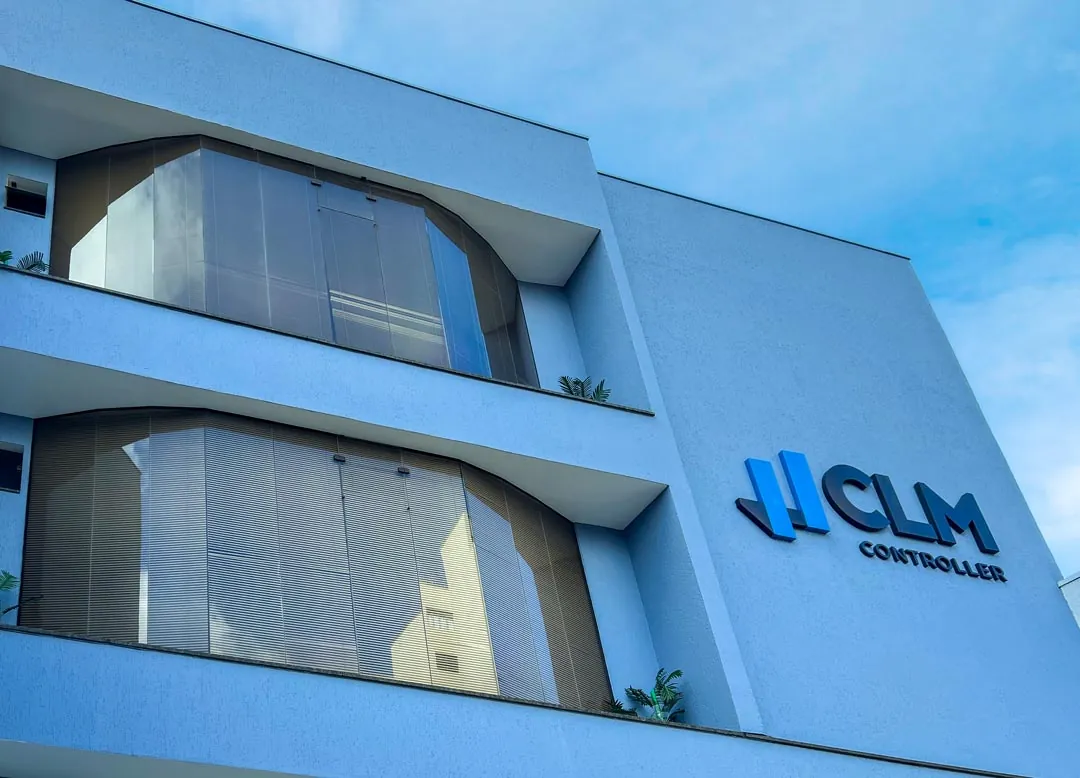Presumed Profit or Real Profit? Find out how the tax reform will affect your company and when to switch with the support of CLM Controller.
Lucro Presumido has always been the choice of many Brazilian companies looking for simplicity and predictability when it comes to calculating taxes. However, the advance of tax reform has changed the rules of the game, requiring a more in-depth analysis of which tax regime really suits the future of the business.
The new legislation promises to simplify taxes and correct historical distortions, but it also imposes challenges that directly affect the tax burden, competitiveness and financial management of companies. That's why understanding Is Presumed Profit still advantageous or is it time to migrate to Real Profit? is really the best option.
In this article, we'll explore the main points that entrepreneurs and managers need to consider before choosing a tax regime amid the changes, as well as showing how CLM Controller can help turn this decision into real gains for your company. Have a good read!
How does the tax reform impact Presumed Profit companies?
The main objective of the tax reform is to unify taxes and simplify collection, replacing federal, state and municipal taxes with new broad-based contributions.
This redesign promises to reduce bureaucracy, but also raises doubts about the criteria for calculating the tax burden under the Presumed Profit.
Some of the direct impacts are as follows:
- change in tax rates applied to turnover, which can increase or reduce the tax burden depending on the sector;
- revision of the calculation bases that were previously presumed, bringing greater rigor to inspection;
- less scope for simplified tax planningThis requires detailed analysis to avoid surprises.
Another sensitive point is that service sectors, historically favored by the Presumed Profit, tend to lose competitiveness if the new rates are close to those charged in the Real Profit.
Companies with tight margins will see their taxes go up, which could jeopardize their cash flow. On the other hand, leaner businesses, with high profitability and low operational complexity, can still benefit from the simplicity of the regime.
This means that companies that previously had predictability when it came to paying taxes now need to assess whether Presumed Profit is still the best choice, carrying out simulations and closely monitoring regulations so as not to be surprised.

Complete Guide to
Tax reform
In which cases is Presumed Profit still advantageous?
Despite the changes introduced by the reform, Presumed Profit is still a good option in some specific contexts.
Service companies that present high profit margins and low operating costs still find this regime a simplified way of collecting taxes, for example. Let's find out about other cases that make this regime advantageous.
Stable annual turnover and within the permitted limit
Presumed Profit continues to be advantageous for companies that have predictable and regular income.
As the regime has an annual turnover ceiling, businesses that do not exceed this limit can better plan their tax burden and keep tax collection simple.
In addition, the stability of revenues reduces the risk of sudden variations that could make the system unviable. For medical clinics, law firms and consulting companies, this scenario also represents savings and ease in day-to-day operations.
Deductible costs are not relevant
In Real Profit, the deduction of expenses has a major impact on the final tax calculation. In Presumed Profit, this factor doesn't interfere as much, since taxation is calculated on a pre-defined profit margin.
Like this, companies with few deductible costsIn this way, companies such as service providers, which rely more on human capital than on inputs, can maintain efficient taxation without having to justify every expense. The gain lies precisely in time savings and less accounting complexity.
Cash flow predictability
Another favorable point is the predictability that Presumed Profit offers. As the calculation follows fixed margins determined by legislation, the company is able to more clearly project the amount of tax to be paid.
This is extremely useful for cash flow planningas it avoids unpleasant surprises and guarantees greater financial security.
For businesses that work with recurring contracts, such as technology companies or marketing agencies, this factor weighs heavily in the decision to remain in the regime.
Even so, it is important to note that companies in sectors strongly impacted by high input costs and inflation need to analyze with caution.
In contexts such as eating out, for example, rising prices can jeopardize margins and make Presumed Profit a less competitive choice in the medium term.

Spreadsheet
Presumed Profit
When is it worth switching to Real Profit?
Migrating to Real Profit, on the other hand, is a strategy that makes sense in other scenarios brought about by the tax reform.
This is because this system enables deduction of expenses and tax incentivesIn addition to adjusting the calculation basis to the company's actual profit. Let's find out about other favorable contexts for its adoption.
High operating costs
Companies that deal with high production costs - be it raw materials, inputs, energy or logistics - see Real Profit as an opportunity to reduce their tax burden.
This is because the lower the net profits, the lower the tax base. Industrial and retail businesses, for example, can benefit greatly from this feature.
Search for greater transparency and fundraising
Lucro Real is also suitable for companies wishing to prepare for attract investors or access more robust credit lines.
As the calculation is more detailed, based on the actual accounting result, the company gains transparency and credibility in the market. This characteristic can be decisive for growing businesses that aim to expand and need to show financial solidity.
Use of tax credits
Another strategic point is the use of tax creditsThis is a benefit that Presumed Profit does not offer. Companies that work with a complex supply chain, imports or exports are able to offset taxes paid in previous stages, reducing the final amount due.
This mechanism, although it requires strict control, can mean significant savings in the medium and long term.
Operating in volatile sectors
Finally, companies that operate in highly volatile markets, where profits can vary greatly from one year to the next, find greater flexibility in Real Profit.
This is because, in periods of falling turnover or reduced margins, taxation follows actual results, preventing the company from paying taxes on presumed profits that didn't materialize.
Of course, this transition requires structured management, organized accounting processes and expert monitoring. But when well planned, migration to Real Profit translates into significant gains in competitiveness and financial sustainability.
What mistakes to avoid when choosing between Presumed Profit and Real Profit?
The choice of tax regime should not be based on superficial impressions. Many managers make mistakes by opting for Presumed Profit just for the sake of simplicity, without evaluating whether it really is the most economical.
Avoiding these failures means looking beyond the present and project the impact of the decision over the next few years. Some common mistakes are the following:
- not to project future scenarios based on the tax reform;
- ignore the variation in costs and margins that can alter the viability of Presumed Profit;
- choose the regime based solely on the company's history, without periodic reassessment;
- fail to include external variables such as inflation, industry changes and legal requirements.
How to plan the transition between tax regimes?
If the detailed analysis shows that Real Profit becomes more advantageousFor example, the company needs a structured plan for the transition.
This change involves reorganize accounting, financial and even corporate processesto ensure that there is no increase in risks or unnecessary costs.
Planning should consider the following points:
- detailed assessment of the impact of the reform on the company's sector;
- comparative simulations between Presumed Profit and Real Profit;
- adapting the accounting system and ERP to meet the new requirements;
- revision of the articles of association and corporate structure, if necessary;
- periodic monitoring to review results and adjust strategy.
Without this care, migration can create more problems than solutions.

Complete guide Real Profit and Presumed Profit in Tax reform
How does CLM Controller help in this process?
Deciding between Presumed Profit and Real Profit in the context of tax reform is no simple task. It requires technical knowledge, sector analysis and long-term financial planning.
A CLM Controller does just that. Some examples of what we can do for your company:
- personalized tax diagnoses for each type of enterprise;
- simulation of different scenarios considering the tax reform and its impact on the business;
- guidance on migration of regimeorganizing accounting and corporate processes;
- monitoring the execution of tax planning, ensuring compliance and efficiency;
- help for managersso that they can make strategic decisions with confidence.
With the support of CLM Controller, entrepreneurs can set aside the risk of choosing an inappropriate regime and turn the tax reform into an opportunity to optimize results and grow sustainably.
The moment calls for caution, but also strategic vision. Presumed Profit companies need to carefully assess whether they still benefit from this regime or whether it is time to migrate to Real Profit.
With well-structured tax planning and the guidance of CLM Controller, the decision between Presumed Profit or ReaThis is no longer a risk, but a powerful tool for increasing competitiveness and ensuring financial stability.
Want to know if Presumed Profit is still the best option for your company? Contact CLM Controller and find out which tax regime maximizes your results in the tax reform scenario.













